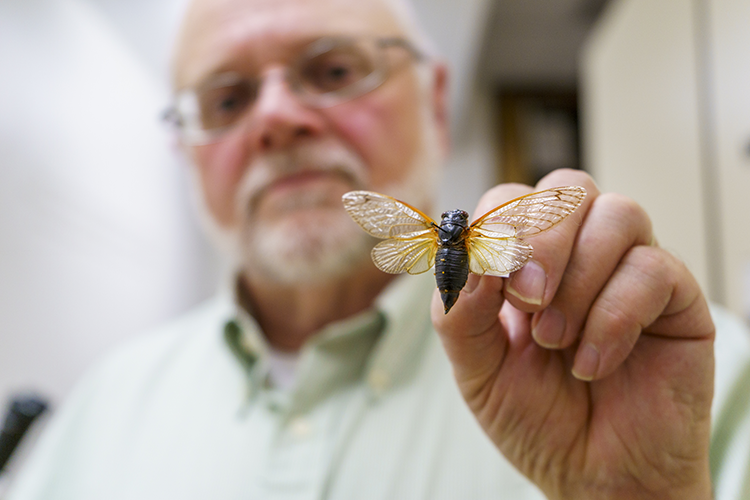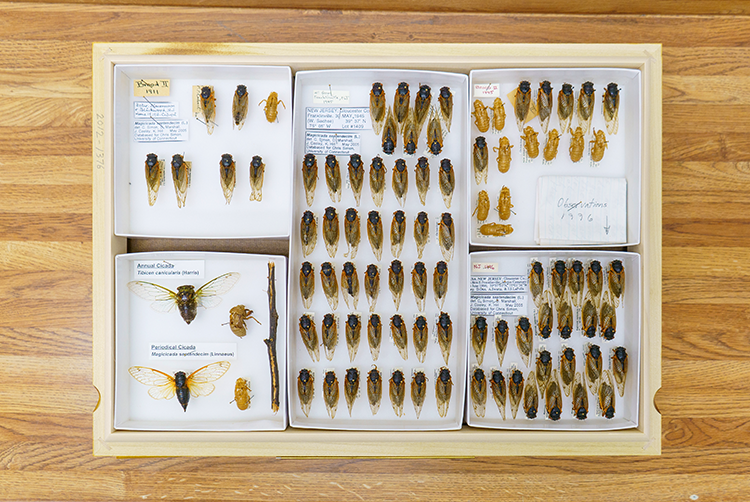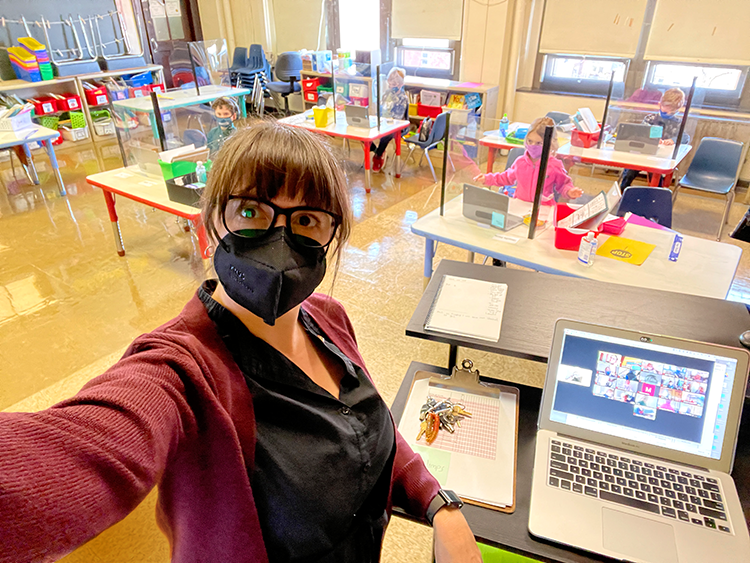On May 9, 1715, Andreas Sandel, a minister at the Gloria Dei Church, aka Old Swedes’ (929 South Water Street), made a note in his journal that “some singular flies came out of the ground.”
“The English call them locusts,” he wrote. “When they left the ground, holes could be seen everywhere in the roads and especially in the woods. They were then encased in shells, out of which they crawled. It seemed most wonderful how being covered with the shell they were able to burrow their way in the hard ground.”
They made a “peculiar noise” when they flew, he continued, and “ … being found in great multitudes all over the country, their noise made the cow-bells inaudible in the woods.”
This year will be just 18 generations of cicadas removed from those Sandel marveled at, and we’ll have a chance to do the same.
“Periodical cicadas take the basic cicada life cycle and, in a mysterious, miraculous act of coordination, follow nearly the exact same extended schedule.”
We now refer to these insects as Brood X periodical cicadas. You are probably familiar with annual cicadas: The greenish, two-inch bugs emerge every August, and the buzzing, throbbing cacophony of singing males forms the soundtrack of late summer. Annual cicadas die soon after mating and laying eggs, and their nymphs burrow underground to spend a few years growing before emerging to again sing, breed and die.

Periodical cicadas take the basic cicada life cycle and, in a mysterious, miraculous act of coordination, follow nearly the exact same extended schedule. The newly hatched nymph (immature bug) burrows down into the ground and starts feeding from tree roots. Seventeen years later the adult-sized nymph, looking like a cross between a flea and a crab, burrows out of the ground and crawls a few feet up a tree or bush. Then, like a butterfly emerging from a chrysalis, its back splits open and a pale, soft adult emerges. As its exoskeleton hardens, it darkens to black and its wings straighten out. With its striking red eyes and transparent orange-veined wings, it buzzes off into the trees, looking to score.
The adult cicada is singularly devoted to mating. The male sings from a tree and the female flies to him to mate, after which she lays eggs in a slit in a twig. Then, after having spent about a month in the fresh air, they die. Seventeen years later, their offspring emerge to repeat the cycle.
“It’s just bizarre,” says Jon Gelhaus, entomology curator at the Academy of Natural Sciences of Drexel University. “Who expects an insect to live 17 years, and then to have them all emerge and be out for a matter of a few weeks as adults and then be gone for 17 years?”
Some periodical cicadas live and breed on 13-year cycles, and some on 17-year cycles. These synched-up cicadas are known as broods, and each brood is numbered depending on where and when they emerge. Brood X (as in the Roman numeral 10), cycles every 17 years and extends from the Mid-Atlantic down to northern Georgia and west to Illinois. The Philadelphia area also hosts two other 17-year broods, II and XIV, which last emerged in 2014 and 2008, respectively.
To make matters even more amazing, each brood includes three distinct species of cicada, which have all managed to synch their life cycles. The three can be difficult to tell apart, even for experts. Greg Cowper, entomology curatorial assistant at the Academy of Natural Sciences, says that the academy lent their periodical cicada collection to an outside researcher who did them the favor of sorting which was which and labeling the specimens.
I lived in Columbus, Ohio, in 1987, two Brood X generations ago. I remember their shed exoskeletons on practically every tree trunk. I lived in Baltimore in 2004, one Brood X generation ago. The hefty and slightly sinister-looking bugs were everywhere in the city, and they made a racket. The local birds stuffed themselves on the bounty, and I distinctly recall a house sparrow chasing and then trying its best to eat a cicada not much smaller than itself.
I might have to work a little harder to find them this year. Although Sandel had no trouble finding Brood X cicadas in Philadelphia, they have grown scarce in the intervening centuries. Gelhaus says the last cicadas collected in Philadelphia date from 1902.
According to Gelhaus, Brood X were documented nearby, in Haverford, Quakertown and Princeton, but not in the city proper. He is hopeful, though, that in our current era of citizen science, someone will find cicadas in their garden and upload a picture to iNaturalist.
“I’m excited to see if some are discovered here in Philadelphia,” he says.
Hordes of these noisy, large black bugs can be a bit alarming to the uninitiated, but they are nothing to freak out about, says Michelle Niedermeier, community integrated pest management and environmental health program coordinator for the Penn State Extension.
“This is not a sign of the end of days,” she says. “This is something that happens, and the ecosystem knows what to do with this. Don’t panic.”
Instead, see how many you can find. Enjoy their song and mark your calendar for May 2038.









